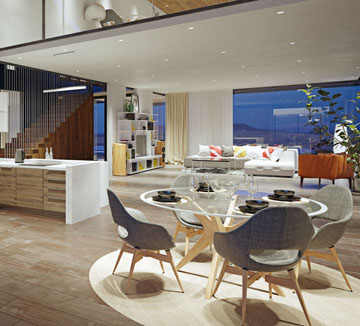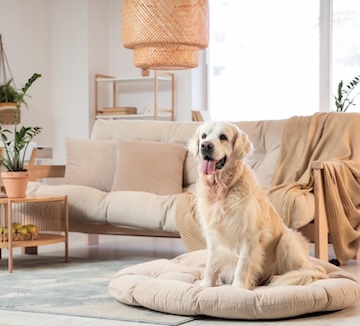Design Trends 2024: Is the Open Floor Plan Era Ending?
 In the world of real estate and interior design, trends come and go, shaping the way we live and interact within our homes. For decades, open floor plans have dominated the residential landscape, praised for their spaciousness, versatility, and modern appeal. But recently, there’s been a noticeable shift, sparking the question: Are open floor plans going out of style, and are closed floor plans making a comeback?
In the world of real estate and interior design, trends come and go, shaping the way we live and interact within our homes. For decades, open floor plans have dominated the residential landscape, praised for their spaciousness, versatility, and modern appeal. But recently, there’s been a noticeable shift, sparking the question: Are open floor plans going out of style, and are closed floor plans making a comeback?
The Rise of Open Floor Plans
Open floor plans gained popularity in the mid-20th century, fueled by the desire for larger communal spaces that encourage interaction and flexibility. The concept involves removing walls between common areas like the kitchen, living room, and dining room to create a more expansive and connected living space. This design fosters a sense of openness and flow, making homes feel larger and more inviting.
Advantages of Open Floor Plans:
- Enhanced Social Interaction: Families can engage in various activities together, promoting togetherness and communication.
- Natural Light: With fewer walls, natural light can easily flow through the home, creating a brighter and more pleasant atmosphere.
- Flexible Use of Space: The open layout allows for versatile furniture arrangements and multifunctional spaces.
- Increased Resale Value: Open floor plans have often been a selling point for potential buyers, appealing to those seeking modern aesthetics and functionality.
Why the Shift?
Despite their many advantages, open floor plans are starting to face criticism, leading some homeowners and designers to reconsider the appeal of closed floor plans. Several factors contribute to this shift:
- Privacy Concerns: The lack of walls means less privacy and sound insulation, which can be challenging in busy households or for those working from home.
- Clutter Visibility: Open spaces can quickly appear cluttered, as there are fewer options to conceal messes or separate areas for specific functions.
- Energy Efficiency: Heating or cooling large open areas can be less efficient and more costly compared to closed-off rooms.
- Noise Levels: With fewer barriers, noise travels more easily, making it difficult to find quiet spaces for work or relaxation.
The Comeback of Closed Floor Plans
As lifestyles evolve, some homeowners are rediscovering the benefits of closed floor plans. Here’s why closed layouts are making a comeback:
- Defined Spaces: Closed floor plans offer distinct rooms for specific purposes, such as a dedicated home office, playroom, or dining room, providing a sense of order and functionality.
- Enhanced Privacy: Walls provide separation, allowing family members to enjoy their own space without constant interaction or distraction.
- Better Noise Control: Enclosed rooms offer superior sound insulation, making it easier to create peaceful environments.
- Energy Savings: Smaller, enclosed spaces are generally more energy-efficient, as heating or cooling can be localized to specific rooms.
- Interior Design Opportunities: Closed floor plans allow for more creative design choices, with each room having its own character and style.
Striking a Balance: The Hybrid Approach
While the debate between open and closed floor plans continues, many homeowners are finding a middle ground with hybrid layouts that blend the best of both worlds. These designs incorporate semi-open spaces, partial walls, or sliding doors, offering flexibility and adaptability to suit various needs.
Benefits of a Hybrid Approach:
- Zoning Options: Use furniture, rugs, or partial walls to create defined zones within an open layout, achieving a balance between openness and structure.
- Adaptable Spaces: Hybrid designs can easily adapt to changing needs, accommodating growing families or lifestyle changes.
- Optimized Light and Sound: Strategically placed partitions can help manage noise while maintaining natural light flow.
Conclusion
The choice between open and closed floor plans ultimately depends on individual preferences and lifestyle needs. While open layouts have been the hallmark of modern living, the resurgence of closed floor plans highlights the evolving priorities of homeowners seeking privacy, functionality, and efficiency. As we navigate these trends, the key is finding a balance that best suits the unique needs of each household.
Whether you’re considering buying a new home or renovating an existing one, understanding the advantages and challenges of each layout will help you make an informed decision. By embracing innovative design solutions and considering your family’s lifestyle, you can create a space that feels just right, no matter where you fall on the open-versus-closed spectrum.
Compliments of Virtual Results





What Others Are Saying